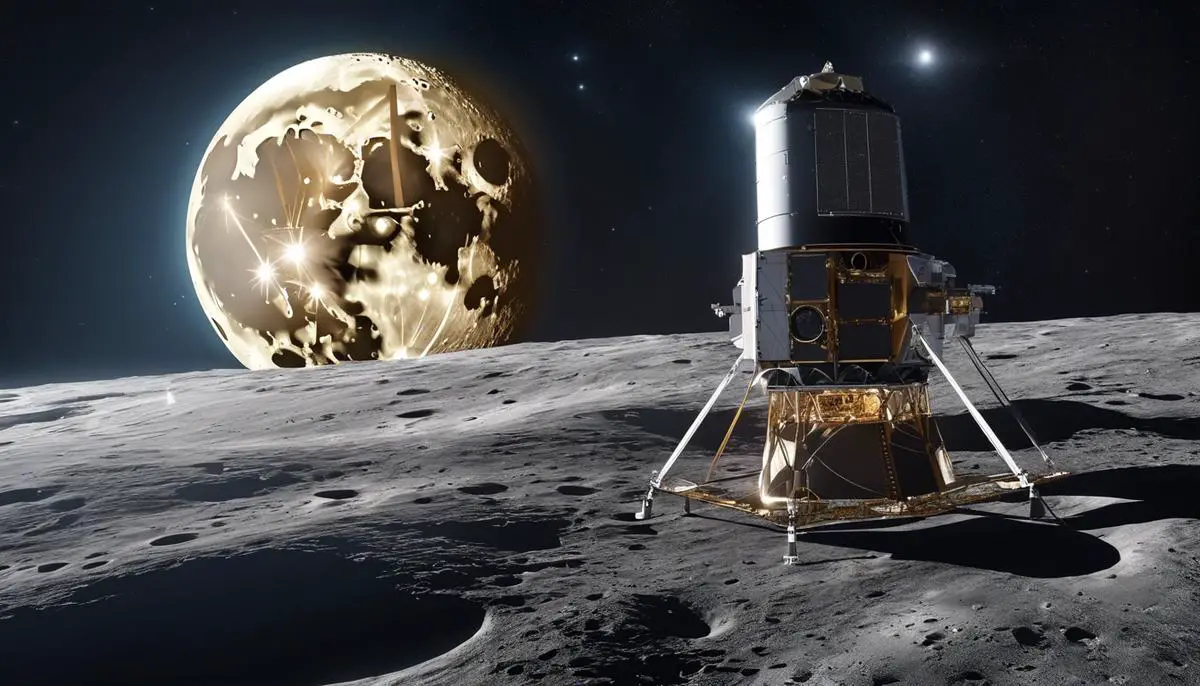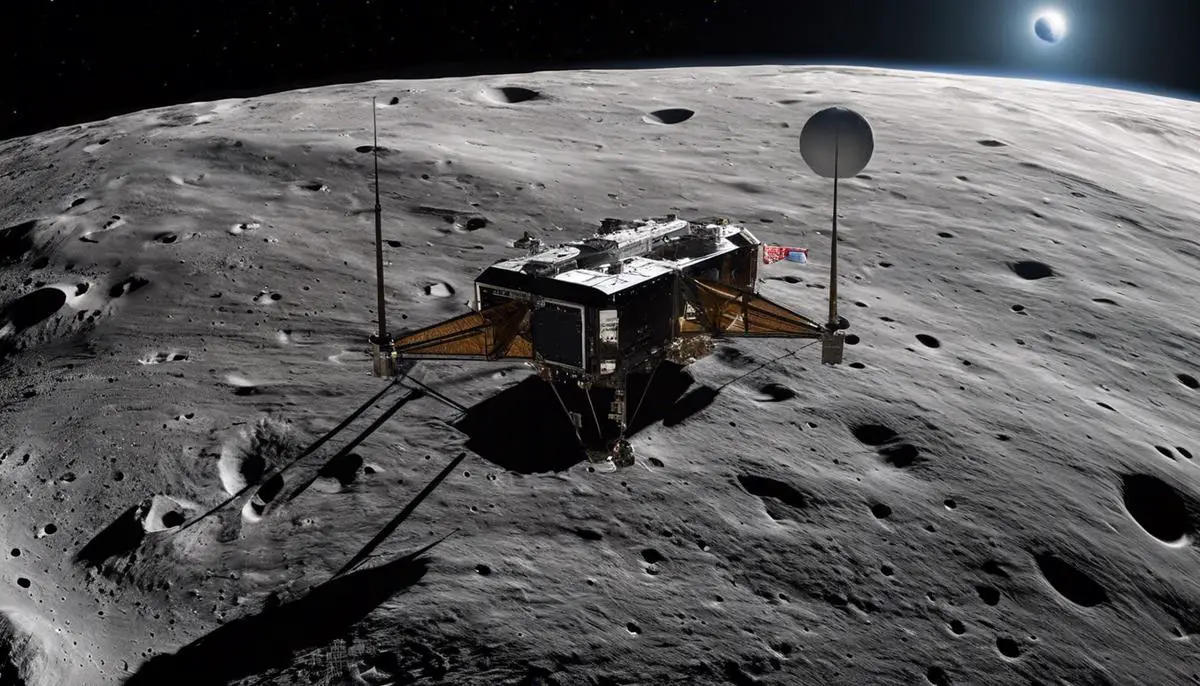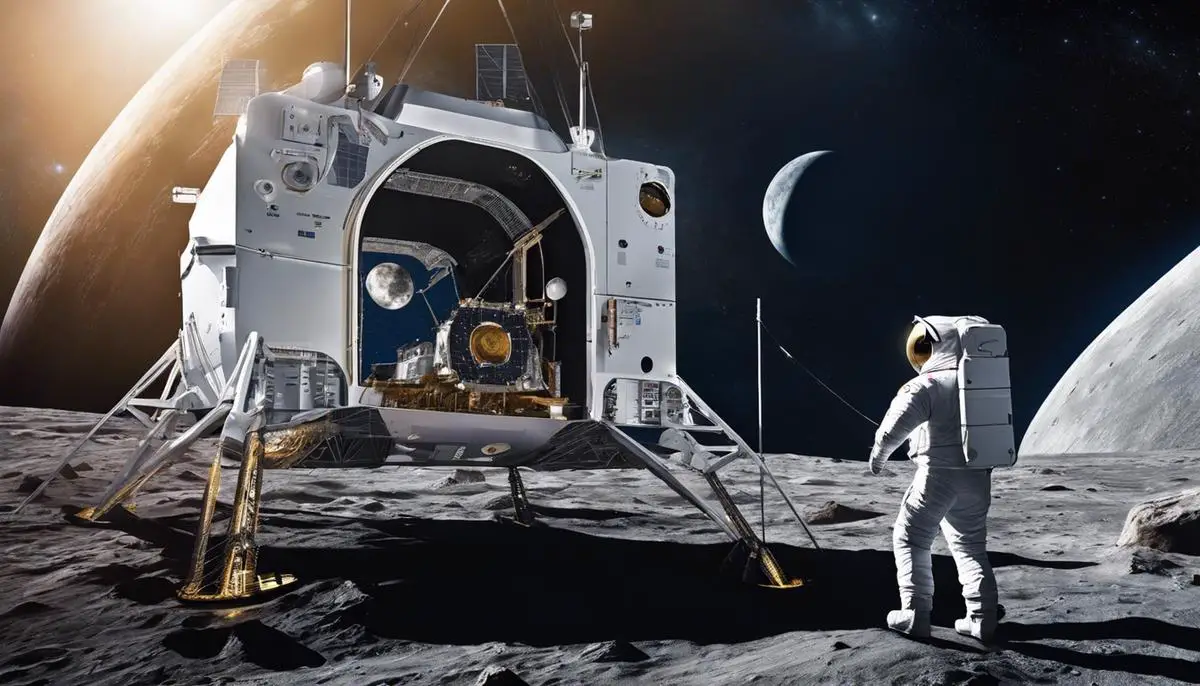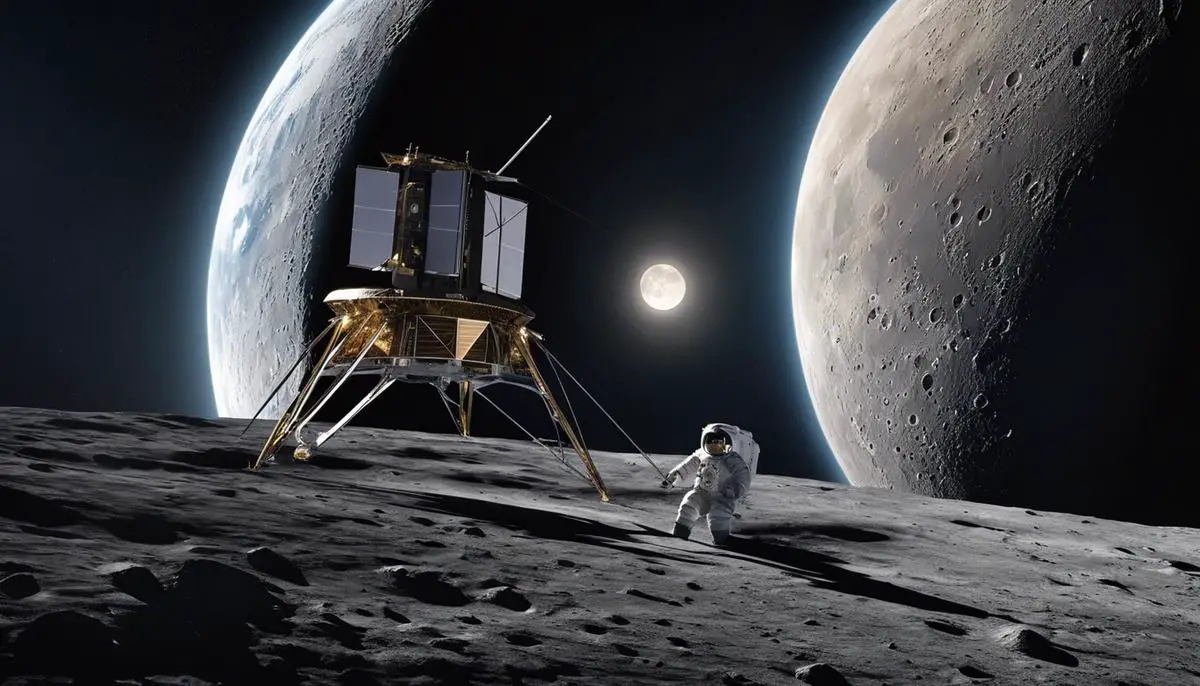Space exploration remains one of humanity’s most compelling frontiers, constantly pushing the bounds of our knowledge, capabilities, and ambition. As part of ongoing efforts to explore and comprehend the cosmos, landmark projects like the Lunar Gateway and the Artemis Program have become symbols of our collective yearning to reach beyond Earth’s confines. This writing aims to shed light on these two transformative endeavors, highlighting their intrinsic connection and how they are raising the bar for future extraterrestrial explorations. It ventures into the conceptual underpinnings and objectives of the Lunar Gateway, elucidates the key facets of the Artemis Program, and reflects on the integral role the Gateway plays in these ambitious space missions.
Contents
Understanding the Lunar Gateway
The Lunar Gateway: A Pivotal Step Towards Space Exploration
Designed as a small outpost orbiting the moon, the Lunar Gateway represents more than just another milestone in space exploration – it signifies an unprecedented collaborative endeavor intended to further humankind’s knowledge about the space environment.
Conceptualized by NASA along with several international partners, this complex is much more than just a lunar station. The Lunar Gateway can be aptly termed as a multi-purpose space lab, communication hub, spacecraft docking station, and the stepping-stone towards much more ambitious endeavors like Mars exploration.
The purpose of the Lunar Gateway is manifold. On one side, it can function as a temporary habitat for astronauts traveling to and from the lunar surface. This, in a way, allows space agencies to pursue sustainable lunar exploration. It provides opportunities for astronauts to live and work around the moon, thereby providing crucial data needed for long-term moon missions.
Furthermore, instead of merely serving as a holding station, the Lunar Gateway is intended to facilitate a multitude of scientific research. The study of lunar geology, solar physics, and fundamental astrophysics are just a few areas where the Lunar Gateway can contribute significantly.
The Lunar Gateway would additionally have a far-reaching impact on the advancement of technology. Spacesuits, for instance, can be optimized for extravehicular activities on the lunar surface. Moreover, technology needed to harvest resources from the moon could be tested and demonstrated at the Lunar Gateway.
Importantly, the Lunar Gateway is a testament to international cooperation in space exploration. The international partners in the project, including Canada, Europe, Japan, and Russia bring their unique technological contributions to the table, creating a truly global effort towards space exploration.
The Lunar Gateway is a paradigm shift in our approach to space exploration. It underlines the understanding that human endeavors beyond Earth are not only about showcasing technological prowess, but about harnessing collaborations, addressing shortcomings, and scaling new horizons of knowledge.

Diving into Artemis Program
The Artemis Program, named after the twin sister of Apollo in Greek mythology, hails from the National Aeronautics and Space Administration (NASA). Not merely a voyage to our Moon, the Artemis mission represents a significant leap in mankind’s endeavors in space and embodies a myriad of ambitious goals.
Spearheaded by NASA, the overarching aim of the Artemis Program is the manifestation of the return of humans to the lunar surface, specifically the mission to land “the first woman and next man” on the Moon by 2024. The excitement and significance of this event resonate in the fact that the last manned lunar landing was accomplished over five decades ago, via the Apollo missions.
One of the pivotal aspects of Artemis is to explore more of the lunar surface than ever before. The program aims to venture into regions untouched by humans and uncover secrets the Moon holds. Regions like the Moon’s South Pole, with its permanently shadowed craters and potential ice deposits, offer invaluable scientific prospects. The exploration will provide critical data for supporting future missions to Mars, as the lunar environment can help prepare for the challenges of the red planet.
Artemis seeks to foster economic opportunities, specifically in the exploitation of lunar resources. The Moon, abundant in valuable resources such as water and rare elements, could very well become an outpost for producing fuel or building materials. These resources could be used to sustain life on the lunar surface or help create an interplanetary economy, supporting further cosmic exploration.
Importantly, Artemis is acting as a catalyst for the new wave of commercial space endeavours. Leveraging partnerships with private companies, the program is driving innovation and cost-effectiveness in spacecraft design, lunar landers, and reusable rocket technology. This is already evident in NASA’s collaboration with high-profile companies like SpaceX and Blue Origin.
Public engagement is also one of the goals of the Artemis Program. By reigniting tangible interest in space exploration, NASA aims to inspire the next generation of scientists, engineers, and astronauts. Hence, it is not only about bringing people to the Moon but also about bringing the Moon to the people.
Conclusively, the Artemis Program is a cradle of revolution in space travel, mantled in multiple objectives revolving around crewed lunar exploration, commercial collaboration, resource utilization, and public inspiration. As such, it is not only a quest for new scientific discoveries and technological advancements but also a bridge uniting the world in shared human achievement. Whether you’re an individual imbued with a sense of wonder or a participant in the global scientific community, the Artemis Program captures the imagination and promises a transformative era of lunar exploration.

The Significance of Gateway in the Artemis Program
The Lunar Gateway, an integral asset of the Artemis Program, contributes significantly to the wider goals of lunar exploration, scientific advancement, and international collaboration. Despite its compact form, the Gateway is designed to facilitate a multitude of activities that broaden our understanding of the moon, fortify space technologies, and foster cooperative pathways in space exploration.
The Gateway plays a crucial role in enabling access to the moon’s South Pole, a region untouched by earlier Apollo missions. This lunar outpost acts as a stopover for astronauts on their way to the lunar surface, and its strategic placement orbits the moon in such a way that all areas, including the significant South Pole, can be reached. This capability is key for the Artemis Program’s intention of unveiling the pole’s mysteries, specifically the supposed existence of water ice vital for sustainable exploration and potential crewed missions to Mars.
Beyond exploration, the Gateway’s deployment is a testament to the sustained technological development marked by innovation and adaptability. It offers a platform for testing and validating new technologies and systems necessary for further voyages into the cosmos. Its role is indispensable for future Mars missions, as it provides a strategic base to develop, test, and refine the technologies and systems required to embark on a long-duration crewed mission to the Red Planet.
Economically, the Lunar Gateway, as part of the Artemis Program, opens doors for novel opportunities. It is paving the way for both government entities and private companies to potentially exploit lunar resources, such as rare elements or solar power. Thus, it is expected to be an important driver of the lunar economy, enabling commercialization and profitable gains from space initiatives.
Moreover, the Lunar Gateway amplifies the role of international partnerships and private sector involvement, bringing fresh perspectives into spacecraft design and space exploration concepts. This introduces wideranging opportunities, enriching technological growth while promoting global unity and cooperation.
Finally, the Lunar Gateway ignites a renewed interest and excitement for space exploration. It serves as a beacon of success and inspiration for human endeavours beyond our terrestrial bounds. As a crucial component of the Artemis Program, its successful operation and expedition may galvanize the next generation of scientists, engineers, and astronauts, all while reinforcing the overarching goal of shared human accomplishment.
In conclusion, the Lunar Gateway’s contribution to the Artemis Program is multiple and broad-spectrum: from paving the way of unprecedented exploration, promoting scientific and technological progression, catalyzing economic innovation, nurturing international partnerships, to ultimately inspiring a new epoch of space discovery and human achievement.

Challenges & Future Prospects: Lunar Gateway & Artemis Program
Yet, as monumental as these feats may be, both the Lunar Gateway and the Artemis Program are not without their challenges; and these challenges, daunting as they might be, also pose immense opportunities for greater exploration and knowledge accumulation.
One critical challenge lies in the difficulty surrounding the attainment of a sustainable lunar presence. Keeping humans on the moon long-term involves the resolution of complex logistical concerns: self-sustaining life support systems, habitats that protect from the harsh lunar environment, dependable, renewable power sources, and the development of technologies and methods for in-situ resource utilization are just a few of the intense pursuits necessary for permanence.
Additionally, conducting scientific exploration while maintaining human safety presents another significant challenge. Immense energy, ingenuity, and innovation will be required to protect astronauts from radiation exposure, the extreme temperatures on the lunar surface, and potential health risks tied to reduced gravity.
The uncertainty of budget allocations and political will also poses potential roadblocks. As ambitious and transformative as these ventures are, they are also pricey. The sustainability of these programs heavily hinges on consistent funding. Any political instabilities could result in changes in budget or project prioritization, potentially delaying or halting progress.
Notwithstanding these obstacles, the venture of establishing a sustainable lunar presence and preparing for further space exploration opens a new frontier full of possibilities. The pursuit of overcoming these challenges will push the envelope of human knowledge in materials science, physics, biology, medicine, and engineering.
Moreover, these endeavors forge pathways for unprecedented international partnerships in space exploration. The convergence of nations through shared ambitions can foster greater understanding, cooperation, improved relations on Earth, and establish international norms in space.
Moreover, while Artemis and Lunar Gateway face significant technological challenges, they also offer numerous opportunities for private sector involvement. By collaborating with commercial partners, NASA can leverage faster innovation cycles and cost-saving strategies, thereby enhancing the prospects of the Artemis Program and the Lunar Gateway.
Both the Lunar Gateway and Artemis are about pushing the boundaries of what we know and what we can do – they are, at their core, explorations of our potential. The challenges they face are real, formidable, and varied, and just like the lunar surface itself, they offer a realm full of mysteries waiting to be unraveled, a treasure-trove of knowledge yet to be discovered, and the promise of our progress as a species that is perpetually reaching for the stars.

As we stand on the precipice of a new era of lunar exploration, the importance of endeavors such as Lunar Gateway and the Artemis Program cannot be overstated. They underscore human resolve and ingenuity, forging a path towards notable achievements in space travel, technology, and understanding. The challenges ahead are substantial, yet the potential rewards are immense and inspiring: a sustainable human existence on the moon, accelerated scientific progress, and the ambition of journeying to Mars. The success of these programs could indeed serve as a springboard for the next giant leap for mankind, reaffirming our commitment to exploring the final frontier.
